Basic Constructs
The RadGrad framework is designed around seven basic constructs: Interests, Career Goals, Courses, Opportunities, Degree Plans, ICE, and Levels.
Interests
Interests represent a set of discipline-specific topics relevant to the degree experience. In computer science, examples of Interests might include "blockchain", "big data", and "Java".
The Interests Explorer provides access to around 80 Interests in the current RadGrad release. Here's an example page for the interest "algorithms":
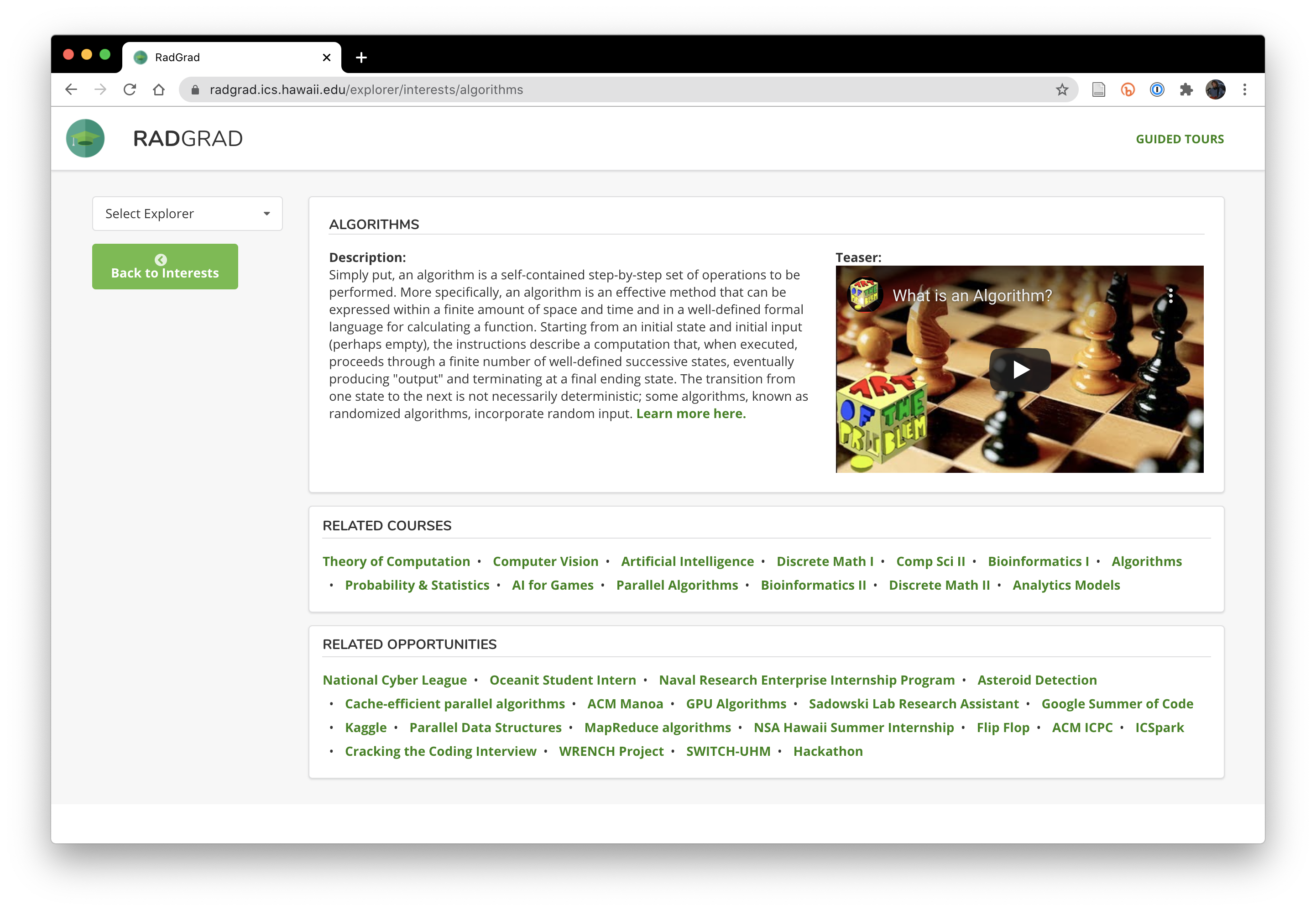
As you will see, Interests are the construct in RadGrad that ties together all of the other constructs. This page illustrates one aspect of that, by listing the Courses and Opportunities associated with the "algorithms" interest.
Career Goals
Career Goals represent professional outcomes that a student can pursue through the degree experience. In computer science, example Career Goals include "Data Scientist", "Augmented Reality Engineer", and "Security Analyst".
The Career Goals Explorer provides access to around 20 Career Goals in the current RadGrad release. Here's an example page for the career goal "data scientist":
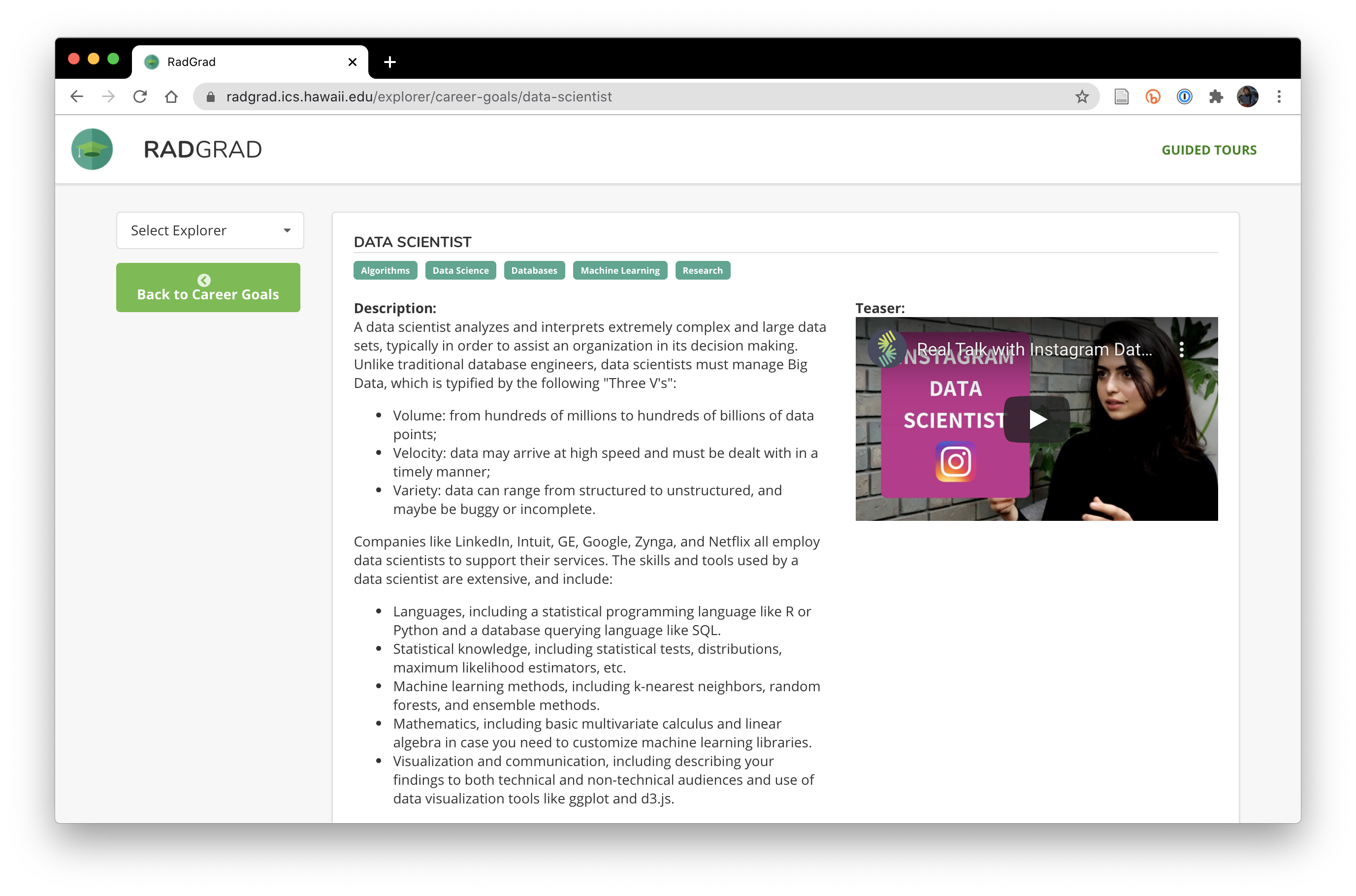
Each Career Goal is associated with one or more interests. These are listed as green tiles underneath the Career Goal name on this page. The Data Scientist career goal is associated with the Algorithms, Data Science, Databases, Machine Learning, and Research interests.
Courses
Courses represent the curricular activities associated with the undergraduate academic unit. For the University of Hawaii computer science department, approximately 40 courses are represented.
The Courses Explorer provides access to around 40 Courses in the current RadGrad release. Here's an example page for the course "ICS 331":
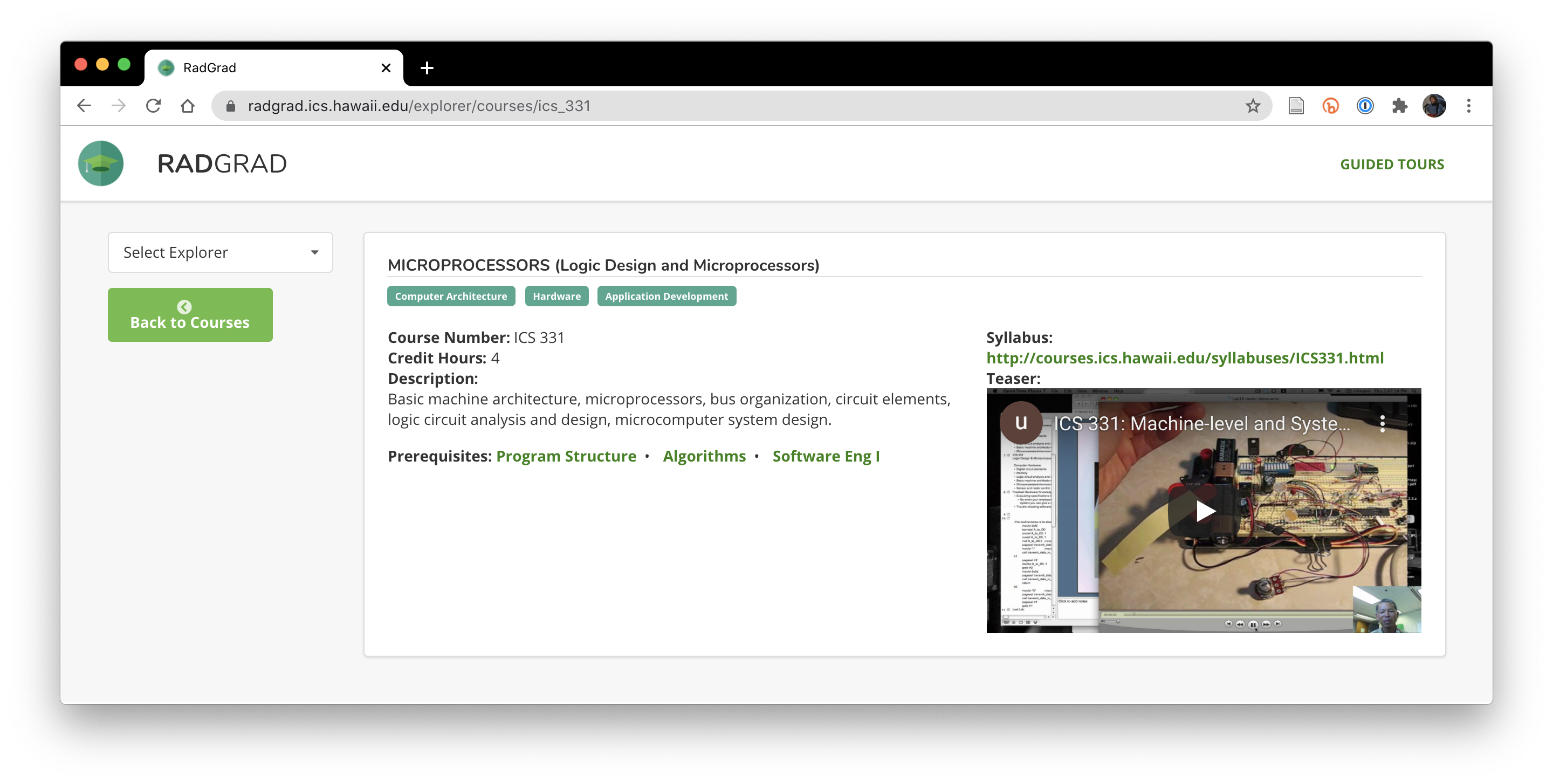
Each Course is also associated with Interests. In the case of ICS 331, they are Computer Architecture, Hardware, and Application Development.
If you are a registered user of RadGrad and can login, then you can see reviews of the course written by students who have taken it previously.
Opportunities
Opportunities represent extra-curricular activities that help a student progress toward one or more Career Goals and/or learn more about a specific Interest. The set of Opportunities are "curated" by faculty members to ensure quality and relevance. Example opportunities include: a local Hackathon, a summer internship at a local high tech company, and participation in a faculty member's research project. Opportunities can also include online courses available through platforms like Coursera or edX, if the faculty have reviewed the offering and found it be useful and appropriate for their students.
The Opportunities Explorer provides access to around 80 Opportunities in the current RadGrad release. Here's an example page for the Opportunity "Hawaii Annual Code Challenge":

Once again, Opportunities are associated with Interests. In the case of HACC, the Interests are: Application Development, Civic Engagement, Data Mining, Data Science, Data Visualization, Social Computing, Sustainability, and Web Development.
Degree Plans
Each student has a Degree Plan, which is the set of Courses and Opportunities that a student has completed previously, is currently taking, or plans to complete in upcoming semesters. By explicitly representing and planning out not just curricular but also extra-curricular activities, RadGrad can provide:
A more wholistic view of the student's disciplinary experience (because disciplinary extra-curricular activities can make fundamental contributions to the educational process), and
A more cohesive disciplinary experience (because RadGrad can use interests and career goals to guide students to compatible extra-curricular activities.
Here is an example degree plan page for a hypothetical student:
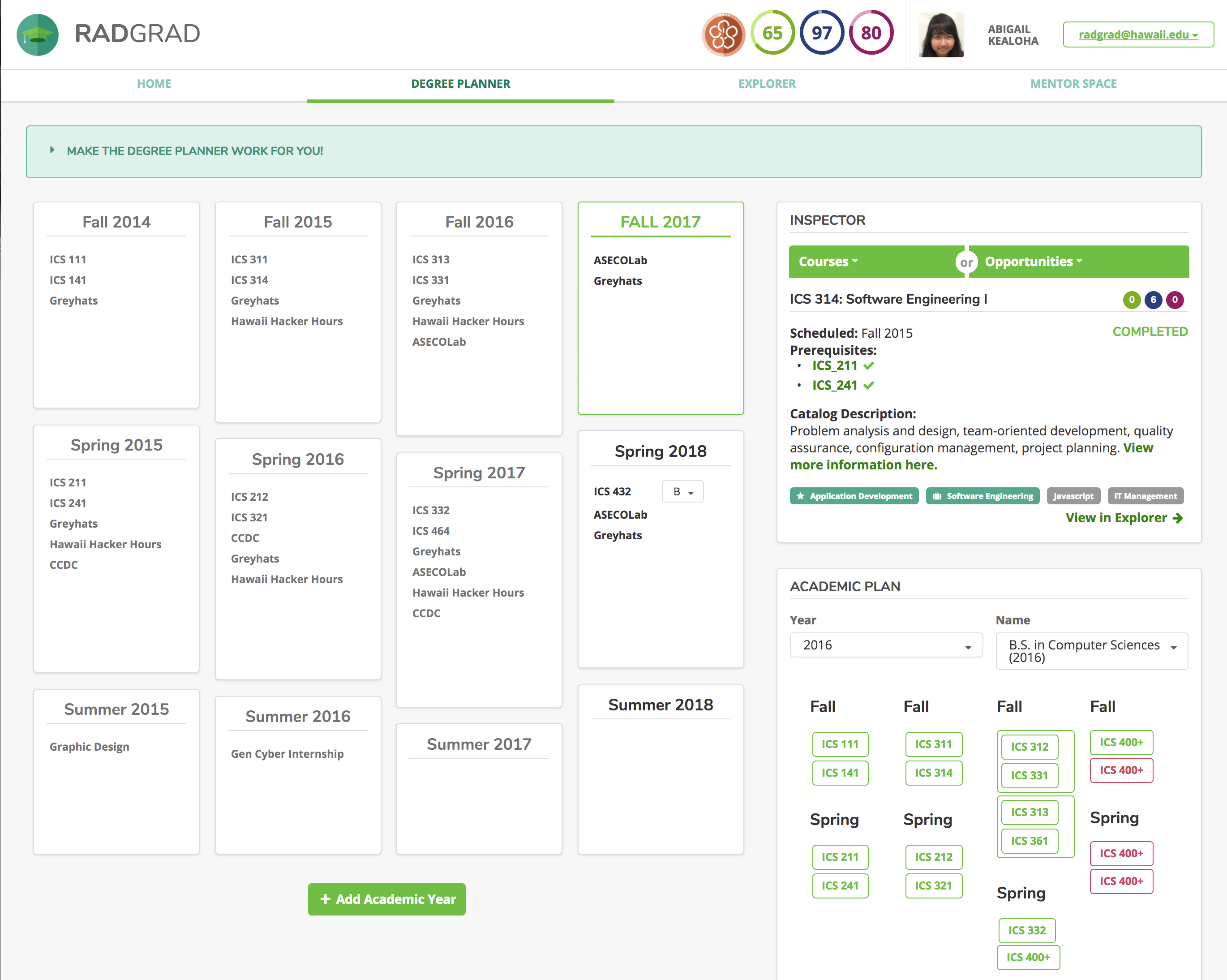
ICE
ICE is a three component measure to track both progress and success within the degree program. ICE is an acronym for its constituent measures, which are named Innovation, Competency, and Experience. To be a well-prepared computer science graduate according to RadGrad, students must earn 100 I, C, and E points by the end of their degree program.
Typically, a student earns Competency points for completing Courses, and Innovation and Experience points for completing Opportunities. RadGrad admins are responsible for assigning the number of points earned for a given Course or Opportunity. For example, a student might earn 10 points for completing a course with a passing grade. For Opportunities, a student might earn 15 Innovation points for a weekend hackathon, and 25 points for a summer-long internship.
Here is a portion of a page illustrating ICE points for a hypothetical student:
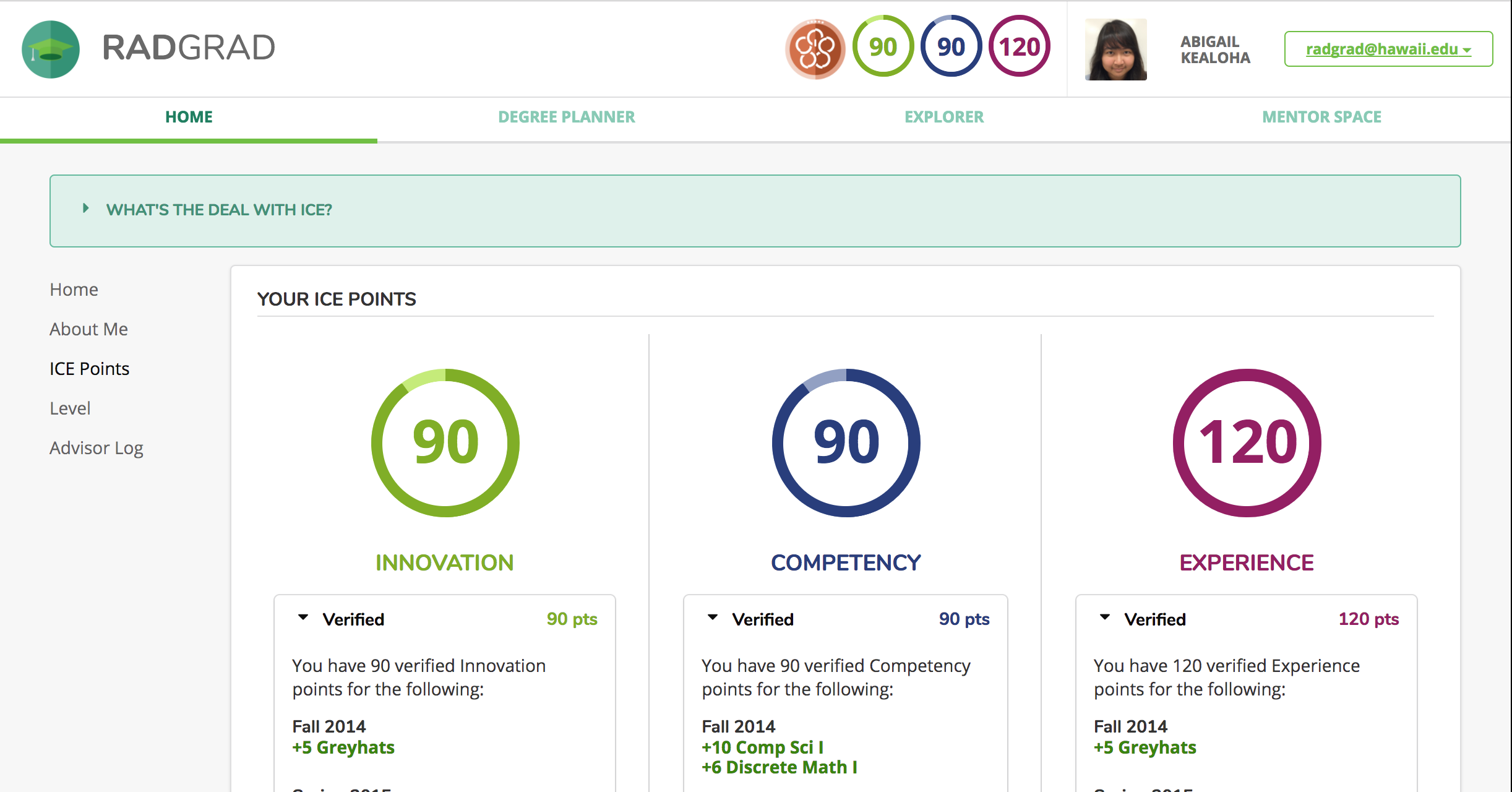
ICE points can be either "planned" or "verified". You obtain "planned" points simply by adding a course or opportunity to your degree plan. But to actually "earn" the points, a course or opportunity must be "verified". Verification of course points is typically done by checking with the institution's credit management system. Verification of opportunities is done by admins or faculty.
Levels
Levels respond to the need we identified during our pilot studies for RadGrad participation to have a physical manifestation. Students want to know who else is using the system, and what progress they have made so far. After several rounds of design, we decided on the use of laptop stickers with a custom RadGrad design, with a color scheme representing a six stage progression from zero ICE points to 300 points across all three categories.
Here are the icons representing the six levels:
Each student's level is also displayed in their navbar to the left of their ICE points once they login to RadGrad. The hypothetical student shown above (Abigail Kealoha) is at Level 5.